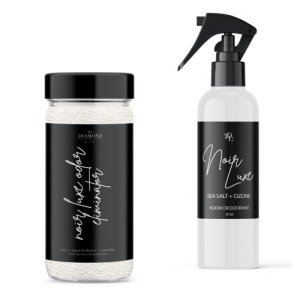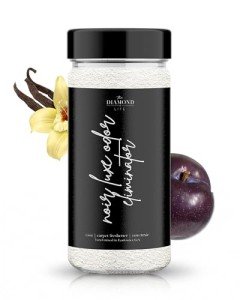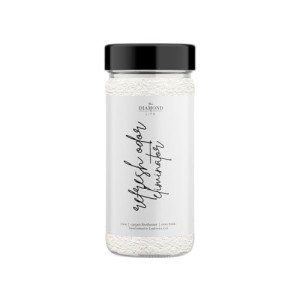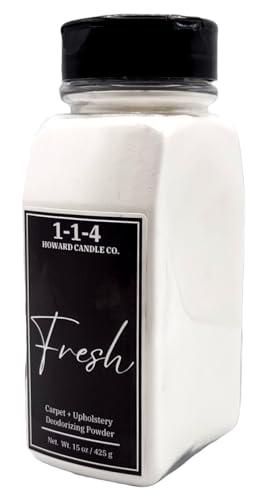Upholstery cleaners are designed to tackle tough stains and odors on furniture, helping to restore your chairs, sofas, and other fabric-covered items to their former glory. But the big question remains: do upholstery cleaners work as promised? Understanding the basics of how these products function can shed some light on their effectiveness.
Most upholstery cleaners come in spray or foam format and contain specialized cleaning agents. These agents break down dirt, stains, and grime embedded in the fabric. Some cleaners also include stain protectants that make it harder for future spills to set in. When using a cleaner, it's essential to follow the instructions provided to ensure the best results. Factors such as the type of fabric and the nature of the stain can significantly influence how well a product works.
Another vital aspect to consider when asking, "do upholstery cleaners work?" is the method of application. Many cleaners require some scrubbing with a brush or cloth to effectively lift stains from the upholstery. Additionally, allowing the cleaner to sit for the recommended time can enhance its cleaning power. Always test a small, hidden area of the fabric first to avoid any unwanted discoloration or damage.
It's also worth noting that the effectiveness of upholstery cleaners can vary by brand and formulation. Some products are specifically designed for certain types of fabrics, while others are more versatile. This means that a cleaner that works wonders on one type of upholstery may not perform as well on another. Therefore, taking the time to choose the right cleaner for your specific fabric type can make a significant difference in outcome.
How They Remove Stains
When it comes to answering the question, "do upholstery cleaners work?", it's essential to understand the processes behind how these products get rid of stains. Most upholstery cleaners employ a combination of cleaning agents designed to tackle a range of stains, from food spills to pet accidents. These cleaners typically penetrate the fabric fibers, loosening the dirt and grime that have embedded themselves over time.
The primary components of these cleaners include surfactants, which help to lift the stain away from the upholstery. Surfactants work by breaking down the surface tension between the stain and the fabric, making it easier for the cleaner to do its job. Once the stain is loosened, it can be removed either through blotting or rinsing, depending on the cleaner's instructions. For particularly stubborn stains, some upholstery cleaners may require scrubbing, which can further help to break down the stain.
In addition to surfactants, many upholstery cleaners also contain enzymes. These biological molecules can target specific stains, especially those caused by organic materials like food or pet waste. The enzymes work to break down the proteins in the stains, allowing the cleaner to lift the remnants from the fabric more effectively. This enzymatic action is often what sets some upholstery cleaners apart and plays a critical role in answering whether do upholstery cleaners work as advertised.
Furthermore, some cleaners utilize steam cleaning as a method to remove stains. This technique involves applying hot water or steam to the fabric, which helps to dissolve dirt and stains. The heat opens the fabric's fibers, allowing for deeper cleaning. Once the steam has worked its magic, a vacuum or extractor usually follows to remove both the dirt and excess moisture, leaving the upholstery cleaner and fresher.
Testing Effectiveness at Home
Testing the effectiveness of upholstery cleaners at home can be a straightforward process. To start, gather a few common stains that you might encounter on your furniture, such as coffee, red wine, or ink. By having a variety of stains, you can better assess how well the cleaner performs against different types of marks. Make sure to treat a small, inconspicuous area of the fabric first to ensure it won’t be damaged.
Once you've identified your test areas, follow the instructions on the upholstery cleaner you’re using. Apply the product according to the guidelines, giving it enough time to work its magic. It's essential to note how easy the application process is and whether the cleaner requires any scrubbing or rinsing afterward. This hands-on experience will help you determine if these products deliver on their promises and truly do upholstery cleaners work as claimed.
After applying the cleaner, take a moment to evaluate the results. If the stains lift well without leaving any residue or discoloration, then you might have found a winner! If not, take note of which stains remain and consider testing a different brand or formula. Each cleaner has its unique strengths and may work better on certain types of upholstery. This trial-and-error approach will give you a better picture of the effectiveness of various upholstery cleaners available in the market.
Lastly, consider documenting your findings. This can be as simple as taking before-and-after photos of your test sections. Not only will this offer you a clear visual representation of how well the cleaner worked, but it will also serve as a helpful reference for future cleaning endeavors. Ultimately, the question “do upholstery cleaners work?” will be better answered once you’ve conducted your experiment at home.
Choosing the Right Product
When considering whether to invest in an upholstery cleaner, one of the key questions is, "do upholstery cleaners work?" The effectiveness of these products often depends on a few crucial factors that can help you choose the right one for your needs. First and foremost, consider the type of upholstery you have. Different fabrics require different cleaning methods, so it's essential to select a cleaner that is specifically designed for your furniture's material.
Next, investigate the ingredients in the upholstery cleaner. Many products contain harsh chemicals that can damage delicate fabrics or leave unwanted residues. Opt for cleaners that are labeled as safe for upholstery and, if possible, choose ones that use natural ingredients. This not only ensures safer cleaning but also makes it more likely that the products will be free from harmful side effects, both for your furniture and for your family.
Additionally, read customer reviews and ratings to gauge the real-world performance of the cleaners you are considering. Look for comments on how well the product removed stains and if it lived up to the claims made on the packaging. This information can provide valuable insights and help answer the burning question of whether do upholstery cleaners work as promised.
Lastly, consider your cleaning needs and frequency. If you have pets or young children, a more robust cleaner might be necessary, while someone with minimal upholstery maintenance may only need a light-duty product. Understanding your specific requirements can help you choose an upholstery cleaner that is both effective and appropriate for your home.




